
Phanteks was founded in the Netherlands in 2007 and focuses on the production of PC cases, fans and other PC accessories. The company celebrated its first successes with a massive dual-tower CPU cooler in various colors. It was only five years later that Phanteks ventured into the case market and introduced the Enthoo Primo in 2013. This was followed by numerous other PC cases in the Enthoo, Evolv and Eclipse series. In July 2022, the company has now introduced the Phanteks Eclipse G360A which we are reviewing today.
The Phanteks Eclipse G360A is based on the popular Eclipse P360A, but offers a few interesting new features. Phanteks cites extended compatibility with larger radiators, CPU coolers and power supplies as the main differences. In addition, the external appearance has been adjusted somewhat and the case has been given an additional fan. Price-wise, the Phanteks Eclipse G360A is priced at € 84.90 *. Can it convince for this price?
Technical details
| Model: | Phantek’s Eclipse G360A |
| Case type: | ATX |
| Dimensions: | 200 mm (W) x 465 mm (H) x 455 mm (D) |
| Weight: | 6.51 kg |
| Material: | Steel, plastic, tempered glass |
| Color: | Black |
| Front connectors | 2x USB 3.0 Type-A, 1x HD audio combo port |
| Drive bays: | 2x 3.5″/ 2.5″ (HDD cage, 2 included) 3x 2.5″ (motherboard tray, 2 included) |
| Expansion slots: | 7x horizontal |
| Form Factors: | ATX, mATX, ITX |
| Ventilation: | Front: 3x 120/ 2x 140 mm Rear: 1x 120 mm Lid: 3x 120 / 2x 140mm |
| Radiators: | Front: 1x 240/ 280/ 360 mm Rear: 1x 120 mm Lid: 1x 240/ 360 mm |
| Max. CPU cooler height: | 162 mm |
| Max. Graphics card length: | 400 mm |
| Max. Net part length: | 280 mm |
| Cable management space: | 16 mm (mainboard tray) 36 mm (cable channel) |
| Price: | € 84.90 * |
| Features: | Dust filter, cable management, 3 pre-installed ARGB 120mm fans including control board, Tempered Glass |



Phanteks Eclipse G360A review: the scope of delivery
The Phanteks Eclipse G360A is shipped in a plain brown cardboard box. Besides a few schematic or technical drawings and the product name, the packaging doesn’t reveal much about the case inside. Inside the box, the midi tower is encased in two hard styrofoam blocks and a sheet of plastic. In addition, the tempered glass side window has also been covered with protective films.
Phanteks has placed the mounting accessories in a brown cardboard box inside the HDD cage. Inside is the mounting instructions, a card with warranty information, and a pouch with all the necessary screws and some cable ties.
Exterior impression
- Airy mesh front panel for high airflow
- Three pre-installed 120mm RGB fans provide great effects
- Hard glass side panel provides deep views
Visually, there are hardly any differences between the P360A and G360A in terms of the front panel. It is almost completely made of mesh steel, which has been placed on a frame made of plastic. The mesh structure is very fine and should therefore also serve as a dust filter. The front panel is not flat, but increases in size towards the bottom. In addition, there is an indentation in the mesh’s lower area, which tapers off and disappears towards the top. A strong tug on the panel reveals the three 120 mm fans with RGB lighting behind it. Optionally, two 140 mm fans or of course radiators can be installed here. Another nice feature is that the corresponding fan mounting frames can be removed from the body, which should especially facilitate the installation of radiators.
The top, much like the front, has been designed for high airflow. The ventilation grille is offset to the left and features mounting rails for three 120mm fans or a 360mm radiator. Above the grille, Phanteks has also placed a mesh dust filter. The I/O panel can be found in the front area of the lid. The ports face upwards and are oriented towards the right side of the case. There are two USB 3.0 ports, an HD audio combo port, and two buttons for RGB color and mode. The power button is instead centered at the top of the front panel.
The left side panel of the G360A is made of tempered glass glued to a steel frame, and does not span the entire left side of the midi-tower. In fact, the lower area of the left side of the case is made of steel and also serves as a power supply cover. The right side panel is completely made of steel and has a good stability. Both side panels were screwed with thumbscrews, which remain on the panel and thus cannot get lost.
The back panel shows an appearance that is common for a midi tower of this size and price range. The power supply is placed in the bottom of the tower and above it are seven reusable PCI slot bezels. Above the perforated slot bezels, there is then room for an optional 120mm fan. There are no other ventilation openings on the back of the Eclipse G360A.
Four large, solid plastic feet ensure a secure stand for the Eclipse G360A. To eliminate vibrations and prevent scratches on the table, the feet also have thin rubber strips. Still noticeable on the bottom are the full-sized dust filter with plastic frame as well as pull-out aid and four screws for removing the internal HDD cage.
Interior impression
- Spacious interior for large components
- Power supply cover hides excess cables
- Construction cable management system could be better
In the interior, compared to the predecessor, almost nothing has changed. Thus, Phanteks also relies on an open-designed interior in the G360A, which is basically divided into two chambers. The large main chamber offers space for a normal sized ATX motherboard, expansion cards and radiators. The motherboard tray is mostly flat in design, but has a bulge in the right area to serve as a cable channel. Phanteks has also equipped the tray with numerous cable management openings. The five side openings are angled at 90 degrees to the motherboard. Lastly, the motherboard tray also features the obligatory cut-out for CPU cooler backplates.
In the lower area you can see the closed power supply cover, which is also part of the left case wall. The only exceptions are a cutout for radiators in the front and two small cable management openings for the I/O cables. Lastly, it should be mentioned that the manufacturer’s logo has been stamped into the side.
A look under the cover reveals the mounting spot for the PSU, which has been covered with four small rubber bumpers. In front of it, the modular HDD cage can be seen. This consists of two steel elements, which can be moved or completely removed if necessary.
Unfortunately, there isn’t quite as much room for cables on the back of the motherboard tray at 16 millimeters. However, Phanteks aims to place all relevant cables in the designated cable channel on the left side. This conveniently also has reusable cable ties with Velcro. Furthermore, there are numerous other eyelets for cable ties.
In terms of mounting media, the G360A supports a normal number of HDDs. The modular HDD cage below the PSU cover offers space for two 3.5″ or two 2.5″ HDDs/SSDs. The larger ones are mounted without tools in the mounting frame. SSDs, on the other hand, have to be screwed to the tray. Two additional 2.5″ HDDs or SSDs can also be attached to the back of the motherboard tray. For this, they have to be screwed to the corresponding tray and locked to the mainboard tray without tools.
Phantek’s Eclipse G360A review: component installation
- Quick and neat installation of components
- Performant but audible fans…
- … generate high airflow and result in low temperatures
Now we come to the system installation. For hardware, we’re using an AMD Ryzen 5 1400 on an MSI B350 PC Mate with 16GB Crucial Ballistix Sport LT gray DDR4-2666. The Ryzen is cooled by an LC-Power Cosmo Cool LC-CC-120-RGB and is overclocked to 3.8 GHz (1.25 V). A GTX 1060 6GB from Gigabyte AORUS is responsible for the image output. The power supply is handled by the fully modular LC-Power LC550 V2.31 Platinum with an efficiency rating of 80 Plus Platinum.
As always, the Phanteks Eclipse G360A review should not be without the installation of all components. This one was not much of a challenge including the wiring of all components. The interior of the Eclipse G360A is spacious and offers a lot of room to work with. The pre-installed spacers as well as its design (motherboard can be held in vertical position without screws) also made the assembly easier and faster.
The cable channel on the back as well as the reusable Velcro strips made it easy to tame and neatly route all cables. However, this was only possible without any problems since we removed the hard drive cage. Especially the cage element, which is positioned closer to the PSU, would have blocked the cables’ path somewhat.
The assembled test system looks visually appealing and very tidy.
According to the dimensions, the G360A offers enough space for components. CPU coolers may be 162 millimeters high and graphics cards may be a maximum of 400 millimeters long. There is also plenty of room for power supplies with a minimum of 220 millimeters. In terms of radiators, the midi tower supports a maximum of one 360 mm radiator in the lid and one 280 mm radiator in the front at the same time. Two 360 mm radiators cannot be stored in the G360A at the same time.
From the factory, the G360A comes with three pre-installed 120mm fans that have nameplates. These consist of a black plastic frame and white, slightly milky, fans with nine rotor blades each. Connection is via a 3-pin connector for power or a proprietary ARGB connector for the RGB lighting, which leads towards the control board. This can also be connected to the motherboard via a conventional 5V ARGB connector if required. The corresponding RGB LEDs are located in the fan hub. The maximum speed of the fans is 1500 rpm.
Phantek’s Eclipse G360A review: temperatures and volume
Lastly, we come to the temperatures that were reached in the Phanteks Eclipse G360A. During the stress test, Prime95 and FurMark were run for 15 minutes at a room temperature of 20 °C. Furthermore, the test was performed with two different fan speeds.
Scenario |
Temperature |
| CPU: 50% PWM (950 rpm) GPU: 50% PWM (1650 rpm) Open-Air Benchtable (no additional fans) |
CPU: 67.1 °C GPU: 57.8 °C |
| CPU: 50% PWM (950 rpm) GPU: 50% PWM (1650 rpm) 3x 120 mm 50% PWM (1050 rpm) |
CPU: 70.3 °C GPU: 60.8 °C |
| CPU: 50% PWM (950 rpm) GPU: 50% PWM (1650 rpm) 3x 120 mm 100% PWM (1500 rpm) |
CPU: 68.8 °C GPU: 58.8 °C |
The achieved temperatures at maximum load are on a very good level and, compared to the measured values without case, just a bit higher, but by no means in a critical range. This shows that the mesh panel in the front of the G360A is not very restrictive and that the three pre-installed ones can deliver decent fresh air into the interior. At full speed, however, the fans are quite audible and also produce very discreet bearing noise. Turned down to under 1000 rpm, the noise is more pleasant and the temperatures are still in a good range.
Lighting Options in the Phanteks Eclipse G360A
- RGB fan and strip with proprietary connectors
- Control board can be directly connected to motherboard
- RGB control also possible without matching mainboard
From the product name alone, one cannot conclude that the G360A has RGB effects on board. Nevertheless, that is the case. For example, three 120mm ARGB fans in the front and an LED light bar at the top of the PSU cover make the G360A glow. For this purpose, all three fans and the light bar are connected to the control board in the I/O panel via proprietary connectors. Its control is done via the two buttons, which are responsible for color or mode. Alternatively, the board also has a female 5V ARGB connector for connecting to a motherboard and a male 5V ARGB connector for connecting additional RGB elements. Power is supplied by a SATA power connector. Finally, a few impressions of the activated lighting.
Phanteks Eclipse G360A review: conclusion
The Phanteks Eclipse G360A brings all the features that a modern midi tower must have. The case is cleanly finished and comes with three fans pre-installed from the factory. Together with the mesh front panel, this allows for high airflow and very good cooling. Other positive features include the spacious interior and the hardware compatibility that comes with it. With both air and water cooling, you hardly have to worry about compatibility with the G360A.
Unfortunately, there are also negative aspects to the Phranteks Eclipse G360A. Considering the price, a fourth fan in the rear and a USB Type-C port in the I/O panel would have been desirable. In addition, the 90-degree rotated cable management openings, depending on the power supply cable or cable extension, make cabling the system difficult. In general, the cable management system only works optimally when at least the first strut of the PSU cage has been removed.
Phanteks charges a price of € 84.90 * for the Eclipse G360A. This puts it in a range where there is a lot of competition that is similarly or even slightly better equipped or finished. Still, the Eclipse G360A is a good midi tower that is sure to find its takers and brings more meaningful improvements compared to the Eclipse P360A.
Phanteks Eclipse G360A
Workmanship
Structure
Features
Cooling
Value for money
87/100
The Phanteks Eclipse G360A is a sensible successor to the P360A. It knows how to convince with a high compatibility for air and water cooling systems as well as good cooling. However, the overall result is somewhat marred by the design of the cable management system.






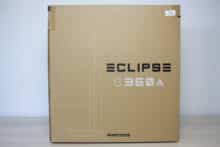

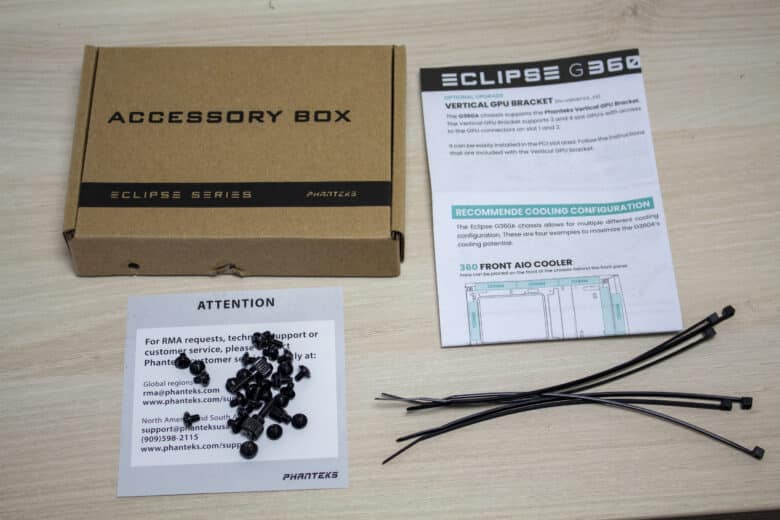
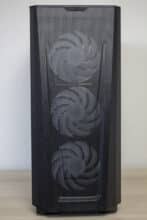


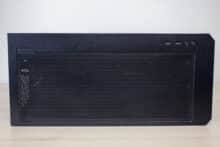

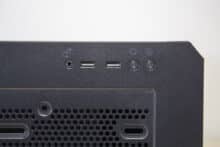




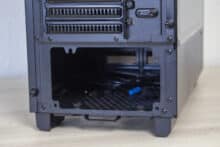

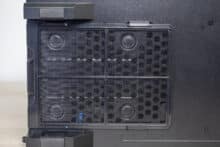
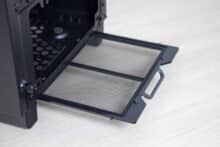
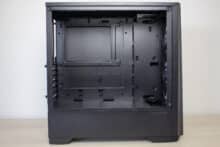
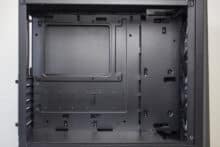
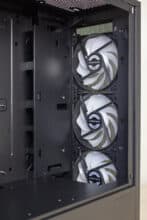
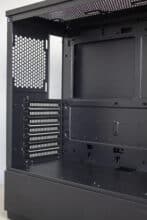

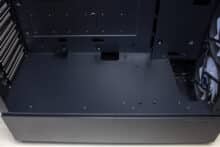




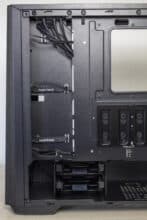

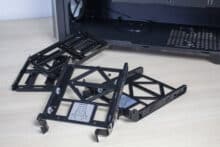
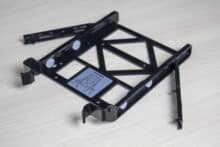

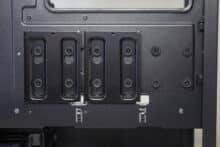
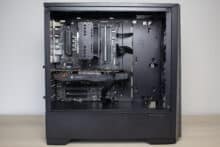
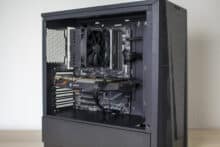


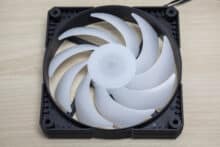
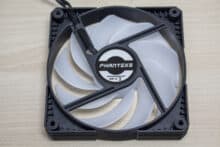
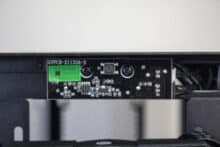
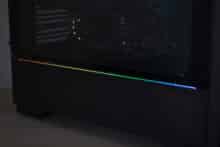
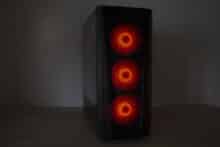






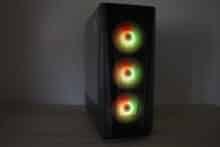



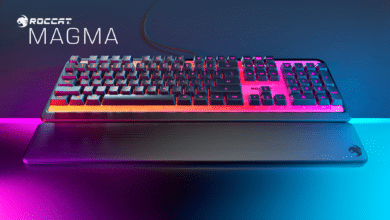
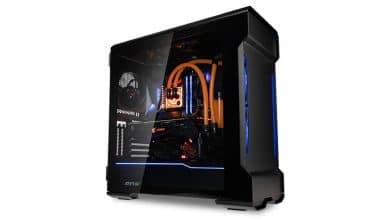
No replies yet
Neue Antworten laden...
Gehört zum Inventar
Beteilige dich an der Diskussion in der Basic Tutorials Community →